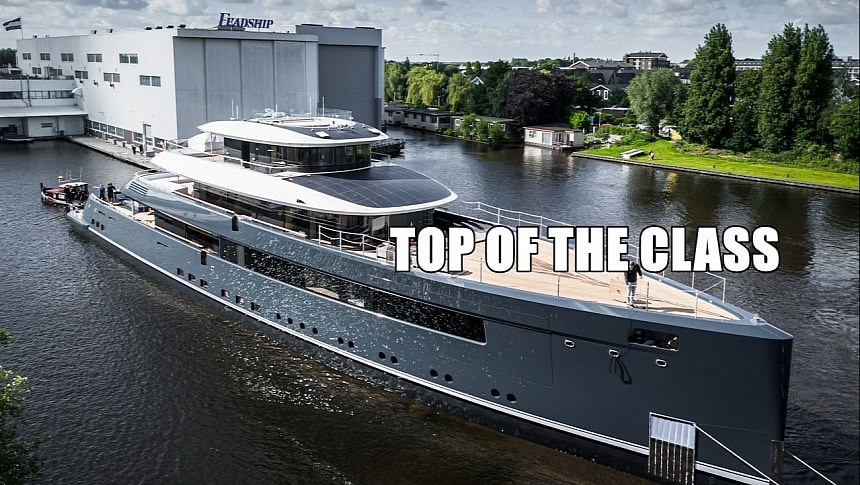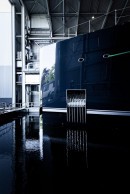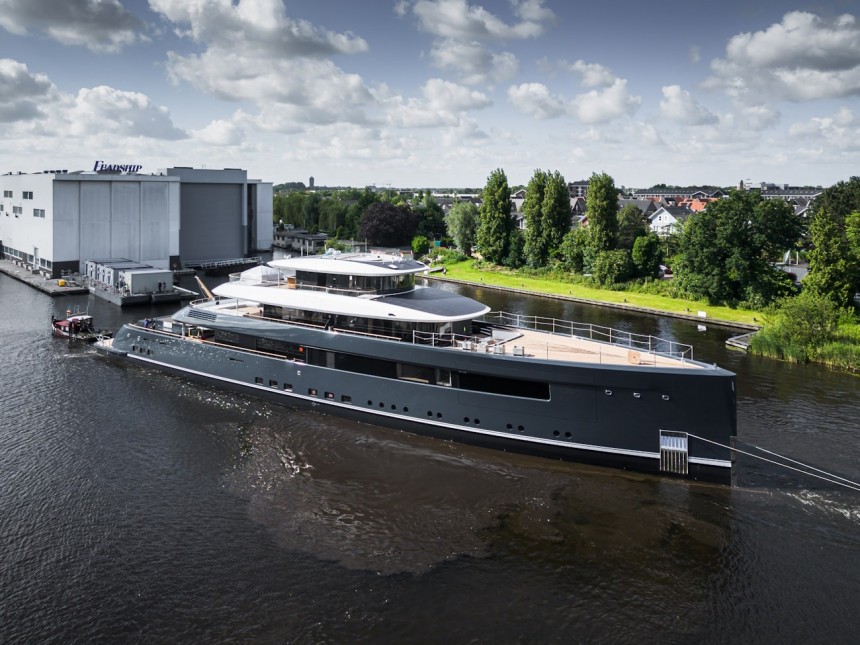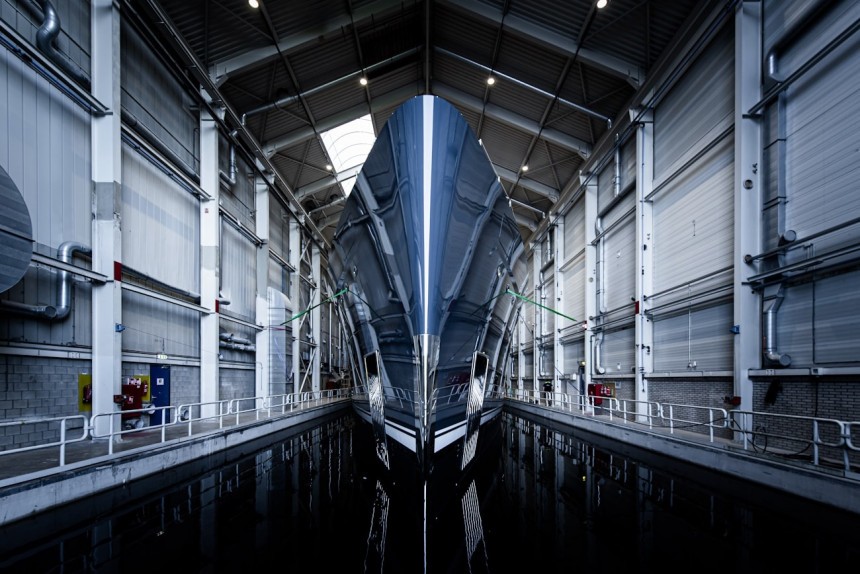If breaking records was a goal in itself, Dutch luxury shipyard Feadship would have long reached it. Over and over again – and once more last weekend, with the launch of Project 713.
Feadship is a name that hardly needs an introduction, even outside of the industry. It's the shipyard behind some of the world's most impressive super- and mega-yachts, admired equally for their size, their styling, their outrageous amenities, and the innovations they bring forth.
Just recently, as part of its recently announced pledge to render its fleet carbon-neutral by 2030, Feadship launched a series of custom builds that broke records.
The two most resounding examples are Obsidian, the 84.2-meter (276-foot) superyacht that was dubbed the world's greenest and "most beautiful," and Project 821, the hydrogen fuel-cell megayacht that was built on commission for none other than Bill Gates. He's selling it for over $600 million, but that's another story for another time.
A short while ago, Feadship announced plans to take its entire fleet net-zero by 2030 – a most daunting and daring challenge in an industry often vilified for its huge carbon footprint. The first steps in that direction have been small but vital, and Project 713 is only the most recent one – more like a leap, rather.
Measuring 59.5 meters (195 feet) in total length, Project 713 is the first Feadship superyacht to rely on solar power as auxiliary power. Propulsion is diesel-electric, with both propulsion and hotel load able to operate on four generators powered by a 400 kWh battery pack. Operation is also possible on non-fossil HVO (hydrotreated vegetable oil) like some other Feadship builds that came before.
Project 713, whose style and eco-credentials were developed in close partnership with the owner (whose identity remains unknown as of this writing), boasts custom solar panels described by the yard as the most efficient and durable on the market. Covering most of the sundeck, they're able to produce 24 MWh annually.
As of this writing, Feadship hasn't offered any specifics on what kind of autonomy the superyacht would have for green operation, or a timeframe for running hotel load in eco mode. According to Feadship, the superyacht has a YETI (Yacht Environmental Transparency Index) score that places it in the top 35% of the fleet, which makes its carbon footprint considerably smaller.
Project 713 is also the first superyacht to leave the Feadship shipyard with FSC-certified plantation teak for all the decking. That means that all wood used for decking was harvested sustainably.
With a design by Sinot and Studio De Voogt, Project 713 features a knife-like bow that bespeaks a hull tailored for more efficient sailing and a raised, elongated foredeck that might house a helipad in the future. The hull is optimized for efficient cruising, as opposed to speed.
Construction isn't yet complete and there's no public timeline for delivery, but make no mistake about this: we're going to be hearing more on this superyacht, and soon.
Just recently, as part of its recently announced pledge to render its fleet carbon-neutral by 2030, Feadship launched a series of custom builds that broke records.
The two most resounding examples are Obsidian, the 84.2-meter (276-foot) superyacht that was dubbed the world's greenest and "most beautiful," and Project 821, the hydrogen fuel-cell megayacht that was built on commission for none other than Bill Gates. He's selling it for over $600 million, but that's another story for another time.
Measuring 59.5 meters (195 feet) in total length, Project 713 is the first Feadship superyacht to rely on solar power as auxiliary power. Propulsion is diesel-electric, with both propulsion and hotel load able to operate on four generators powered by a 400 kWh battery pack. Operation is also possible on non-fossil HVO (hydrotreated vegetable oil) like some other Feadship builds that came before.
Project 713, whose style and eco-credentials were developed in close partnership with the owner (whose identity remains unknown as of this writing), boasts custom solar panels described by the yard as the most efficient and durable on the market. Covering most of the sundeck, they're able to produce 24 MWh annually.
Project 713 is also the first superyacht to leave the Feadship shipyard with FSC-certified plantation teak for all the decking. That means that all wood used for decking was harvested sustainably.
With a design by Sinot and Studio De Voogt, Project 713 features a knife-like bow that bespeaks a hull tailored for more efficient sailing and a raised, elongated foredeck that might house a helipad in the future. The hull is optimized for efficient cruising, as opposed to speed.
Construction isn't yet complete and there's no public timeline for delivery, but make no mistake about this: we're going to be hearing more on this superyacht, and soon.

















